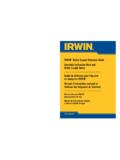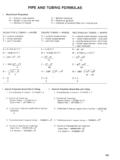Transcription of See Helsinki on Foot
1 1 See Helsinki on Foot5 walking routes around town Clear maps26 km6 km2,5 km6 km4 km 3 See Helsinki on foot 5 walking routes around town6 km6 km2,5 km6 km4 kmRoutesDiscover the historic city centreSenate square Kruununhaka Katajanokka 5relax in the green heart of the cityCentral Railway Station El intarha T l 10 Delight your senses in the Design District Esplanadi Bulevardi Punavuori 17enjoy the smell of the sea Market square Kaivopuisto Eira 23explore the colourful street corners of KallioKallio Harju Alppila 29 tip!
2 More information about the architects mentioned in the text can be found on the back cover of the Helsinki on foot 5 walking routes around townPublished by Helsinki City Tourist & Convention Bureau / Helsinki Travel Marketing Ltd Design and layout by Rebekka Lehtolatranslation by Crockford CommunicationsPrinted by Art-Print Oy 2011 Printed on Multiart Silk 150 g/m2, Galerie Fine silk 90 g/m Descriptions of public art by Helsinki City Art MuseumPhotos courtesy of Helsinki Tourism Material Bank, Helsinki City Material Bank: Roy Koto, Sakke Somerma, Anu-Liina Ginstr m, Hannu Bask, Mika Lappalainen, Matti Tirri, Esko J ms , Kimmo Brandt, Juhani Seppovaara, Pertti Nisonen, Mikko Uro, Mirva Hokkanen, Arno de la Chapelle, Comma Image Oy.
3 Helsinki City Museum photo archives, Mark Heithoff, Jussi Tiainen, Helsinki City Photo Competition: sashapoMaps: City Survey Division, Helsinki 001/2011 Special thanks to: Senior Researcher Martti Helminen, City of Helsinki Urban Facts Hannele Pakarinen, Helsinki City Real Estate Department Teija Mononen, Helsinki City Art MuseumThis brochure includes paid publisher of this brochure is not responsible for changes or the accuracy of contact details or other such length of route6 km5 Discover the historic city centreSENATE square KRUUNUNHAKA KATAJANOKKA the government buildings and museums in the historic quarters of the city centre reflect Helsinki s colourful past.
4 Senate square is the main central square in Helsinki . The first buildings here appeared in the 1640s, including a church, cemetery and town hall. The town was destroyed during the Greater Wrath (1713-1721), and the area around the square began to be rebuilt in 1721 at the end of the Great Northern 1809 Finland was ceded by Sweden and annexed to the Russian Em-pire as an autonomous grand duchy. Helsinki was made the new capital in 1812, and work began on building a new beautiful design of Senate square was the work of the town plan-ner Johan Albrecht Ehren-str m and Carl Ludvig Engel, a native of Germany.
5 Ehrenstr m designed a new geometric town plan inspired by Neoclassicism, and Engel designed the main buildings. Trading activities were moved to the Market square , with Senate square representing a symbolic space. Government, municipal, church and academic institu-tions were built around the square . The wooden Ulrika Eleonora Church was pulled down, and the original site of the church is marked on the cobble-stones of the present square . Archeological excavations have uncovered over 130 graves beneath the square . kruununhaka got its name from the land around the area of Rau-hankatu street that was used for grazing the horses of the crown s artillery.
6 The layout of the streets in this district is based for the most part on Johan Albrecht Ehrenstr m s town plan of 1812. Most of the streets here were named in the 1820s and 1830s after members of the ruling Romanov family and according to the political climate of the time. The oldest names that are still used to this day are Unioninkatu and Liisankatu, which were confirmed by Tsar Alexander I on his visit to Helsinki in 1819. katajanokka is known for its cohesive Jugend architecture, as well as for its active port once the busiest in Finland. The district remained little changed throughout the 19th century while the area around Sen-ate square underwent a complete transformation.
7 1. Helsinki Cathedral is one of the most familiar landmarks in Helsin-ki. Completed in 1852 and originally known as St. Nicholas Church, the cathedral overlooks Senate square . Construction began in 1830 accord-ing to Engel s design and continued following his death in 1840 under Ernst Lohrmann, who added the four small towers around the main dome and the two side pavilions. The west pavilion houses the church bells, while the eastern one houses a chapel. Tsar Nicholas I contributed to the exterior appearance of the cathedral by commissioning the zinc statues of the apostles for the roof from four German sculptors.
8 He also donated a painting by German-Russian artist T. K. von Neff to hang above the altar. The otherwise sparse interior of the cathedral also fea-tures statues of Luther and Melanchton, as well as Mikael Agricola (c. 1510-1557), father of the Finnish Reformation and Finnish literature. When Helsinki became a diocese in 1959, the cathedral was renamed Tuomiokirkko in Finnish. In addition to serving its own congregation, Helsinki Cathedral hosts major state and university events. Exhibitions and concerts are also held in the vaulted crypt. Each year local residents and visitors gather in front of the cathedral to see in the New Year.
9 The steps afford a superb view over the roofs to the South university buildingHelsinki University LibrarySenate square and Helsinki Cathedral6originally built in the 1700s and modified according to Engel s design in 1816-1818, after which it served as the Town Hall. Today the house serves as a boutique for Finnish design products. The old Town Hall has been fully restored to how it was in the early 19th century and is used by the city to host official functions. A new City Council Chamber was completed in the central section of the block in The house at Sofiankatu 4 was designed by Lars Sonck and now serves as the main branch of the Helsinki city museum.
10 In addition to exhibition space, the building features offices and other work facilities. The Helsinki City Museum presents daily film clips about Helsinki in the adjacent Kino engel cinema. The museum shop is located on the ground floor. Free The street museum on Sofiankatu is the only museum in Helsinki that never closes, presenting the history of street building and fittings in Helsinki . 10. The sederholm house was built in 1757 by John Sederholm, a successful merchant in his day. The oldest stone building in the city centre, it now houses a branch of the Helsinki City Museum that pre-sents temporary The White hall (Valkoinen Sali) was designed by Walter Jung in 1925 and is used for exhibitions and The house that is painted a dark reddish-brown dates from the 1820s and nowadays serves as the official residence of the Mayor of On the left side of Aleksanterinkatu across the small park is the house of nobility designed by Georg Theodore Chiewitz in the Neo-Gothic style and completed in 1862.








